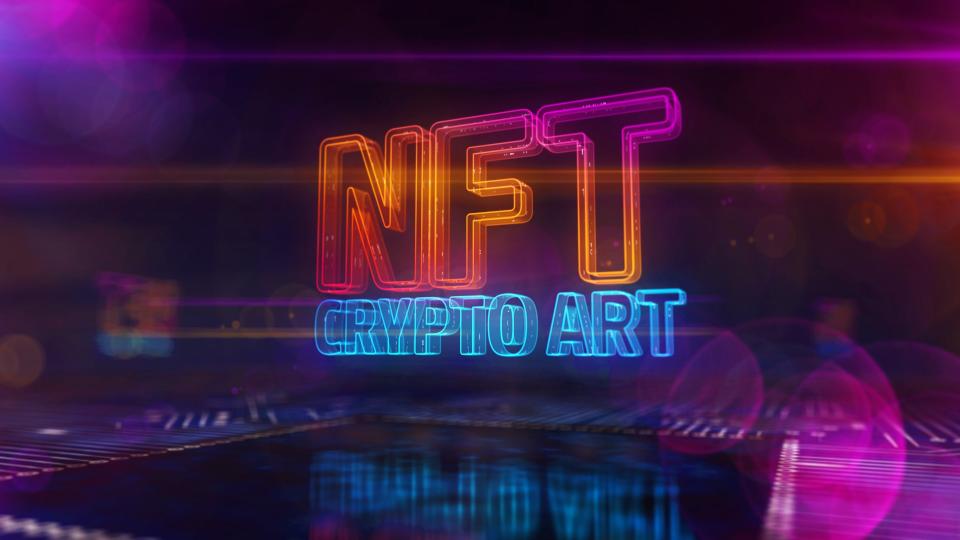What’s Next in the World of NFTs?

Since NFTs exist under the blockchain umbrella of cryptocurrency, investors and collectors are wondering whether the crypto crash will stamp out the fledgling NFT market before it even spreads its wings.
See Our List: 100 Most Influential Money Experts
Find: 13 Ways To Make $100 in Just a Day
That’s not likely, but it’s also misguided to think that NFTs will continue on in their current form as investments and collectibles. NFTs — digital representations of original ownership — have the potential for functional, real-world utility when the internet completes its third metamorphosis, but a widespread shift in public attitudes would have to come first.
Beyond Collectibles: The Rise of Subscription NFTs
Harrison Hosking is the marketing manager of KEAK, which builds tools for discovering, trading and managing NFT projects. His team believes the NFT space will evolve to resemble the early days of the mobile app marketplace.
Live Richer Podcast: Trading Secrets — from Crypto to Congress — with WallStreetBets
“Remember 10-15 years ago when apps were priced at $0.99 to $9.99? There were no subscriptions and few revenue streams, if any, for companies once users had paid the initial charge,” Hosking said. “Today, of the top 200 highest-grossing apps in the app store, only one charges users to download it: Minecraft at No. 163. Virtually all apps are free and supported by either subscriptions, ads or a mix of both.”
According to Hosking, NFTs are poised to follow the mobile app model. Their creators will learn how to cash in without requiring consumers to buy them.
Free NFTs as a Staple of the Web3 Economy
The third iteration of the internet — Web 3.0 or Web3 — will be a decentralized web centered around digital ownership and a token-based economy. Blockchain, crypto and NFTs will be at the heart of Web3 — and this is where Hosking believes the free NFT revolution will truly emerge.
“Free NFTs enable companies to leverage their NFTs as marketing resources while providing future revenue streams through trading fees,” Hosking said. “We believe the equivalent of a free trial in Web3 will be free NFTs because it is free, tangible value for the user that opens the door for future monetization for companies.”
On the other hand, blockchain’s inherent transparency and openness will force Web3 startups to adapt.
“In a lot of cases, the data they use to power their products is available freely on the blockchain for anyone to use,” Hosking said. “Moats will be built with distribution and network effects, not proprietary data. If that holds true, then the smart move for teams will be to use the perceived value of the NFTs they create to onboard users, get distribution for their products and delight their early users. The shift has already started.”
The Revolution Depends on Widespread Adoption
Sudhir Khatwani, crypto expert and founder of The Money Mongers, agrees with Hosking that NFTs have the potential to fuel the next incarnation of the internet. But he believes the key is to change the popular image of NFTs as digital auction novelties for eccentric collectors.
“NFTs have a lot of use cases,” Khatwani said. “They can help develop tokenized ownership systems in real estate and they can expand the realm of digital work, but the common perception today is that NFTs are all about digital art. The current fixation with NFTs as collectibles can be a stumbling block to the development of a thriving NFT ecosystem in the future. In my opinion, whether or not NFTs will have a boom in the future depends on whether they simply remain within the collectibles field or if they go on to become utilities.”
The marketplace is currently a long way from achieving that kind of critical mass.
“Right now, the biggest problem with NFTs is adoption,” said Stefan Ristic of BitcoinMiningSoftware.com. “According to Roger Ver, whose lecture I listened to at Tomorrow Conference, only 0.0005% of people are currently involved with NFTs.”
Mainstream Adoption Would Crash Into Scalability
Mainstream adoption might be necessary, but it simply isn’t possible — at least not yet. The current infrastructure could never be scaled to absorb all of that new activity.
“I think the next big thing for NFTs is scalability,” said Nick Ryley, founder and owner of The PC Geekz tech blog. “Right now, there are only a few blockchains that can handle the volume of transactions that would be needed for mass adoption. Ethereum is one of them, but it’s still not fast or cheap enough. I think we’ll see new platforms emerge that will be purpose-built for NFTs and can handle the transaction volume and speed that’s needed.”
If NFTs Won’t Be Digital Artwork, What Will They Be?
Kidyba Iryna, financial manager with the crypto company Simple, agrees that the concept of NFTs purely as digital art is becoming obsolete — but she thinks that play-to-earn gaming will follow it out the door. That will leave room for NFTs to reach their full potential as a staple of the Web3 economy.
“The NFT market will continue its growth, but interest in digital art and GameFi will decline,” Iryna said. “The use of financial NFTs, the use of interchangeable tokens to tag real assets, NFTs in meta-villages, NFTs as tickets, NFTs as tokenized rights, etc., will grow in popularity.”
More From GOBankingRates
States Whose Economies Are Failing vs. States Whose Economies Are Thriving
Looking To Diversify in a Bear Market? Consider These Alternative Investments
This article originally appeared on GOBankingRates.com: What’s Next in the World of NFTs?

 money
money 